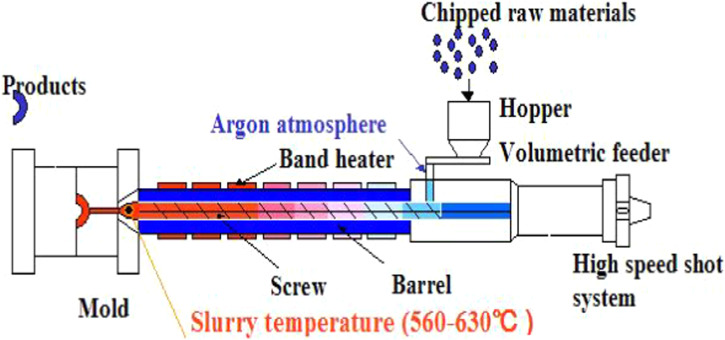Magnesium alloys are lighter engineered metal materials. It has good specific strength and specific stiffness. It is especially suitable for the manufacture of engineering structural parts that require light weight, high strength, shock absorption and noise reduction, and shell parts that require a certain strength. Magnesium alloys have the advantages of low melting point, low specific heat, and fast filling speed. It is ideal for forming using modern die casting techniques. With the development of modern science and technology and related industrial technologies, the application scope of magnesium alloys has expanded rapidly, especially in the automobile industry and electronic information industry.
For a long time, 80% of magnesium is used for aluminum alloy additives or deoxidation in metallurgical industry, 13% is used for casting alloys, and 3% is used for deformed products. With the advancement of science and technology and people’s understanding of the value of magnesium, its products are widely used in aviation, aerospace, auto parts, electronics and communications.
The rapid growth in the number of magnesium alloys chosen by the automotive industry is an important factor driving the growth of the number of magnesium alloys in the world. Manufacturers use magnesium alloy parts in automobiles not only to reduce weight, but also to continuously improve the cost performance of automobiles, thereby enhancing the competitive advantage in the increasingly fierce automobile market.

Under the coordination of China, automobile manufacturers in developed countries such as Europe, the United States and Japan cooperate closely with scientific research institutes, invest a lot of manpower and material resources, implement a number of large-scale research and development plans, and discuss the production of magnesium alloy auto parts. . These R&D projects promote the application of magnesium alloy die castings in automobiles.
With the digitalization of the electronic information industry, the market has higher and higher requirements for highly integrated, frivolous, and recyclable electronic communication products. Engineering plastics, once the primary information, can no longer meet the requirements, so people pay attention to magnesium alloys. For example, magnesium alloy has excellent thin-wall casting properties, its die-casting wall thickness can reach 0.8mm-1.5mm, and has certain strength, stiffness and impact resistance. Therefore, under the requirements of thin wall, light weight, impact resistance, electromagnetic shielding, heat dissipation and environmental protection, magnesium alloys have become a better choice for manufacturers.
In recent years, the consumption of magnesium alloys in the electronic information industry has increased sharply, which has become another important factor driving global magnesium consumption. The price and production process of alloy die castings have been greatly broken. With the continuous improvement from the movement of magnesium to the production process of magnesium alloys, and the characteristics of easy recycling, the price of magnesium alloys has been further reduced.
The emergence of new magnesium alloy die-casting technology has expanded the application scope of magnesium alloys and enhanced the competitiveness of engineering materials such as magnesium alloys.
-

- Customized foundry products high precision die-casting parts for e-bike integrated frame
-

- parts&comopnents for bicycle suspension fork for MTB
-

- Customized foundry products e-bike components magnesium alloy wheel
-

- Mangensium alloy die-casting Thixomolding metal parts
-

- High precision magnesium alloy die casting parts for automotive ignition lock
-

- Magnesium alloy die-casting LED display frame

 0086-750-5616188
0086-750-5616188 +86 13392089688
+86 13392089688 sales@zhongmei-tech.com
sales@zhongmei-tech.com







